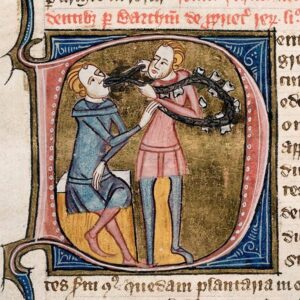
Figure 1: A monument (front left) to the meltdown at the Chernobyl Nuclear Power Plant that occurred in Reactor Number Four (back right)
Source: Wikimedia Commons, Tiia Monto
In April 1986, the Chernobyl Nuclear Power Plant near the town of Pripyat in the former USSR (and present-day Ukraine) experienced an uncontrolled chain reaction in Reactor Four as a result of a delay and subsequent loss of power during a routine safety test (International Nuclear Safety Advisory Group, 1992). This caused the thermal energy output of the reactor to reach around ten times its regular levels, leading to an explosion due to the pressure of all the hot steam produced. This in turn destroyed the reactor core. While this did cause the chain reaction to cease, it exposed the core to the air, causing the graphite attached to it to catch fire and spread radioactive particles into the air as ash. This fallout blanketed the surrounding area, causing the authorities to eventually declare the area thirty kilometers in radius around the reactor an uninhabitable zone (Nuclear Energy Agency, 2002).
Many studies have been done of the effects of the radioactive material expelled from the plant on humans and other wildlife in the surrounding areas. Studies regarding the mutagenic effects of the fallout on humans have explored various topics, including the non-cancerous effects of exposure, its connection to thyroid cancer, and whether the genetic mutations caused by exposure are transmitted to children of those who are affected or not.
When one thinks of diseases caused by radioactive mutagenesis, the first that comes to mind is likely cancer. However, other conditions are possible. A meta-analysis of existing research studies has revealed evidence of increased cardiovascular diseases incidence in workers who were in and around the power plant during the catastrophe. Increased risk of heart disease was also seen for liquidators (clean-up workers called upon to deal with the aftermath of the reactor meltdown). The mechanism of the relation between the radiation exposure and the onset of cardiovascular disease is unknown, although similar evidence has been collected from other incidents of radiation exposure (e.g., survivors of nuclear bomb attacks), helping to validate this conclusion that heart disease is linked to radiation (Cardis & Hatch, 2011).
Another radiation-linked disease is cataracts. Cataracts is a condition that occurs when the lens of the eye becomes cloudy due to the accumulation of some precipitate substance, leading to a decrease in vision quality. There has been a known correlation between cataracts and radiation exposure since the 1990s, and a review of its prevalence among liquidators of the Chernobyl nuclear plant has helped strengthen the association. Various forms of radiation may cause cataracts by altering the DNA of individuals in such a way to render certain proteins insoluble in the lens, leading to the characteristic cloudiness that plagues cataract sufferers (Cardis & Hatch, 2011).
Thyroid cancer is the most common form of cancer seen in those affected by the radiation from the Chernobyl plant. This is because one of the major components of the radioactive fallout is Iodine-131 (131I), which settled onto grass and was consumed by cattle in the area, leading to the material ending up in the milk and meat produced from the livestock. In the human body, iodine is sent to the thyroid gland for the production of the thyroid hormones: triiodothyronine (T3) and thyroxine (T4). Individuals who consumed the contaminated food experienced a buildup of radioactive 131I in their thyroid glands.
Once ingested, the mutagenic effects of the radioactive isotope can result in different kinds of thyroid cancer, with papillary thyroid carcinoma (PTC) being the most prevalent (Morton et al., 2021). Various studies confirmed increased risk for thyroid cancer in individuals exposed to 131I at any point in their lives (Cardis & Hatch, 2011). A recent study from Morton et al. used genomic analysis to determine that PTC tumors that occurred in individuals who were exposed to radiation from the Chernobyl incident had similar mutations. Many such mutations occur in genes that code for cell-cycle regulating proteins. In altering the functions of these proteins, cancerous cells can skip important regulatory steps in their development cycle, leading to the unregulated growth seen in many tumors. For example, the most commonly mutated gene resulted in activation of the cell-cycle promoting B-Raf protein by altering the valine residue at its 600th position. Additionally, other tumor-promoting mutations occurred in the B-Raf-containing mitogen-activated protein kinase (MAPK) pathway. Many of the tumor producing mutations occurred via a two-step process. First, the ionizing radiation resulted in double-stranded breaks (i.e., a break in both strands in the DNA, resulting in two separate DNA helices). Then, the break was repaired by a process known as non-homologous end joining, where the DNA repair system simply stitches two bits of broken DNA together despite a lack of similarity between them. This one-two-punch of mutagenesis often resulted in fused genes, which then code for abnormal proteins. These fused genes were not seen in tumors from patients who were not exposed to the Chernobyl fallout. Using this fact, the researchers argue that the degree of gene-fusion within a PTC tumor can be used to determine a) whether the tumor is likely to have been caused by radiation and b) the amount of radiation the patient may have been exposed to (Morton et al., 2021).
Another recent study focused on the transmissibility of the mutations caused by exposure to radiation. De novo mutations are mutations that occur in the gametes (sperm or eggs) of parents before their fusion into a zygote in the production of offspring (the mutation impacts the resulting child and is present in the DNA of every one of its cells); theoretically, increased exposure to radiation could increase the rate of mutation in the germ cells of parents, causing increased de novo mutations seen in their children. By examining the genes of liquidators and their children, it was possible to determine whether there were increased amounts of de novo mutations in the children of liquidators. The researchers found that, when compared to the rest of the population, there were similar rates of such mutations, indicating that alterations to the germline via radiation likely does not occur to a detectable degree (Yeager et al., 2021). Similarly, the previous study on PTCs found that out of the 350 patients who were exposed to ionizing radiation from the fallout, only 2 possessed alterations in the driver genes they detected within their germlines. Additionally, 2 out of the 78 patients who developed PTC without being exposed to radiation contained such mutations in their germ cells. Thus, there is no significant difference in transmissibility of the mutations, helping to validate the conclusion that the radiation does not typically affect germline cells and the offspring of those impacted by dangerous radiation exposure (Morton et al., 2021).
While all of these studies focused specifically on those who were affected by radiation from the meltdown at Chernobyl, the results can likely be applied to all cases of those who were exposed to ionizing radiation, especially Iodine-131. Thus, while the accident was incredibly unfortunate, we have learned a lot from it that may help us better treat individuals who have the misfortune of being exposed to similar levels and kinds of radioactive emissions. Further research on such radiation-exposed individuals can help confirm whether the radiation has any impact on other aspects of health.
References
Cardis, E., & Hatch, M. (2011). The Chernobyl Accident—An Epidemiological Perspective. Clinical Oncology, 23(4), 251–260. https://doi.org/10.1016/j.clon.2011.01.510
Genetic effects of Chernobyl radiation. (n.d.). ScienceDaily. https://www.sciencedaily.com/releases/2021/04/210422150435.html
International Nuclear Safety Advisory Group (Ed.). (1992). The Chernobyl accident: A report by the International Nuclear Safety Advisory Group (Updating).
Morton, L. M., Karyadi, D. M., Stewart, C., Bogdanova, T. I., Dawson, E. T., Steinberg, M. K., Dai, J., Hartley, S. W., Schonfeld, S. J., Sampson, J. N., Maruvka, Y. E., Kapoor, V., Ramsden, D. A., Carvajal-Garcia, J., Perou, C. M., Parker, J. S., Krznaric, M., Yeager, M., Boland, J. F., … Chanock, S. J. (2021). Radiation-related genomic profile of papillary thyroid carcinoma after the Chernobyl accident. Science, 372(6543). https://doi.org/10.1126/science.abg2538
Nuclear Energy Agency, & Organisation For Economic Co-Operation And Development. (2002). Chernobyl: Assessment of Radiological and Health Impacts (2002 Update of Chernobyl: Ten Years On). https://www.oecd-nea.org/jcms/pl_13598/chernobyl-assessment-of-radiological-and-health-impacts-2002?details=true
Yeager, M., Machiela, M. J., Kothiyal, P., Dean, M., Bodelon, C., Suman, S., Wang, M., Mirabello, L., Nelson, C. W., Zhou, W., Palmer, C., Ballew, B., Colli, L. M., Freedman, N. D., Dagnall, C., Hutchinson, A., Vij, V., Maruvka, Y., Hatch, M., … Chanock, S. J. (2021). Lack of transgenerational effects of ionizing radiation exposure from the Chernobyl accident. Science, 372(6543), 725–729. https://doi.org/10.1126/science.abg2365
Related Posts
Preventing Peripheral Artery Disease in African Americans from Georgia: A Public Health Initiative
This publication is in proud partnership with Project UNITY’s Catalyst Academy 2024...
Read MoreLooking into the Past for a Glimpse of the Future: Using Medieval Tonics as Modern Antibiotics
Figure 1: In the image above, one can see a...
Read MoreBio-renewable Alternative to Polyethylene Terephthalate (PET)
The pliability and low-cost of synthetic thermoplastics have rendered them...
Read MoreFrankie Carr



